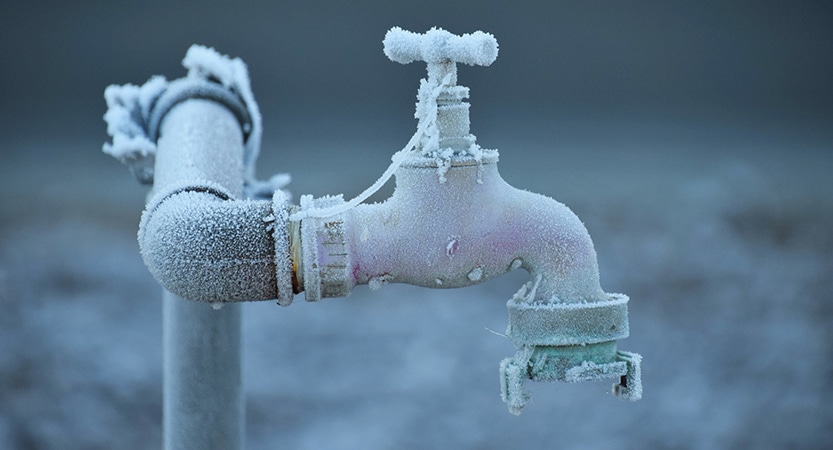Important Advice for Avoiding Frozen Pipes in Winter Conditions
Important Advice for Avoiding Frozen Pipes in Winter Conditions
Blog Article
The writer is making several good pointers related to Winter Plumbing Precautions: Preventing Frozen Pipes in general in this great article following next.

Cold weather can wreak havoc on your plumbing, especially by freezing pipes. Below's exactly how to avoid it from occurring and what to do if it does.
Intro
As temperature levels drop, the danger of icy pipelines rises, potentially causing expensive repairs and water damages. Comprehending how to stop frozen pipes is critical for property owners in cool environments.
Understanding Icy Pipelines
What creates pipelines to ice up?
Pipelines ice up when revealed to temperatures listed below 32 ° F (0 ° C) for extended periods. As water inside the pipelines freezes, it increases, taxing the pipeline wall surfaces and potentially causing them to rupture.
Risks and damages
Frozen pipes can result in water system disturbances, building damages, and pricey repair services. Burst pipelines can flooding homes and cause considerable architectural damages.
Indications of Frozen Piping
Determining icy pipes early can stop them from breaking.
How to identify icy pipelines
Look for reduced water flow from faucets, unusual odors or sounds from pipes, and visible frost on exposed pipelines.
Prevention Tips
Insulating vulnerable pipelines
Wrap pipes in insulation sleeves or use warmth tape to safeguard them from freezing temperatures. Focus on pipes in unheated or external locations of the home.
Heating methods
Maintain interior rooms appropriately heated, especially areas with pipes. Open closet doors to permit cozy air to circulate around pipelines under sinks.
Safeguarding Outdoor Pipes
Garden hose pipes and outside taps
Disconnect and drain garden hose pipes before winter season. Mount frost-proof faucets or cover outside faucets with protected caps.
What to Do If Your Pipelines Freeze
Immediate activities to take
If you presume frozen pipes, maintain faucets open to eliminate pressure as the ice melts. Utilize a hairdryer or towels taken in hot water to thaw pipelines gradually.
Long-Term Solutions
Architectural modifications
Consider rerouting pipelines away from exterior wall surfaces or unheated locations. Include added insulation to attic rooms, basements, and crawl spaces.
Updating insulation
Invest in high-quality insulation for pipes, attics, and wall surfaces. Proper insulation helps keep constant temperatures and lowers the threat of icy pipelines.
Final thought
Preventing icy pipes calls for aggressive steps and fast responses. By understanding the causes, signs, and preventive measures, property owners can shield their plumbing during winter.
6 Proven Ways to Prevent Frozen Pipes and Protect Your Home
Disconnect and Drain Garden Hoses
Before winter arrives, start by disconnecting your garden hoses and draining any remaining water. Close the shut-off valves that supply outdoor hose bibs and leave the outdoor faucet open to allow any residual water to drain. For extra protection, consider using faucet covers throughout the colder months. It’s also important to drain water from any sprinkler supply lines following the manufacturer’s directions.
Insulate Exposed Pipes
Insulating your pipes is an effective way to prevent freezing. Pipe insulation is readily available at home improvement stores and is relatively inexpensive. Pay close attention to pipes in unheated areas such as the attic, basement, crawl spaces, or garage. Apply foam insulation generously to create a buffer against the cold. You can also wrap your pipes in heat tape or thermostat-controlled heat cables for added warmth.
Seal Air Leaks
Inspect your home for any cracks or openings that could let in cold air. Seal any holes around the piping in interior or exterior walls, as well as the sill plates where your home rests on its foundation. Additionally, make sure to keep your garage door closed unless you’re entering or exiting. Leaving it open creates a significant air leak that can lead to frozen pipes.
Allow Warm Air Circulation
During cold snaps, it’s essential to allow warm air to circulate evenly throughout your home. Leave interior doors ajar to promote better airflow. Open kitchen and bathroom cabinets to help distribute heat consistently around the rooms. If you have small children or pets, be sure to remove any household chemicals or potentially harmful cleaners from open cabinets for safety.
Let Faucets Drip
A small trickle of water can make a big difference in preventing ice formation inside your pipes. When temperatures drop significantly, start a drip of water from all faucets served by exposed pipes. This continuous flow helps prevent the water from freezing. Additionally, running a few faucets slightly can relieve pressure inside the pipes, reducing the chances of a rupture if the water inside does freeze.
https://choateshvac.com/6-proven-ways-to-prevent-frozen-pipes-and-protect-your-home/

As a passionate person who reads about How To Avoid Freezing Pipes, I thought sharing that excerpt was worthwhile. If you enjoyed our blog posting kindly do not forget to share it. I thank you for reading our article about Winter Plumbing Precautions: Preventing Frozen Pipes.
At This Website Report this page